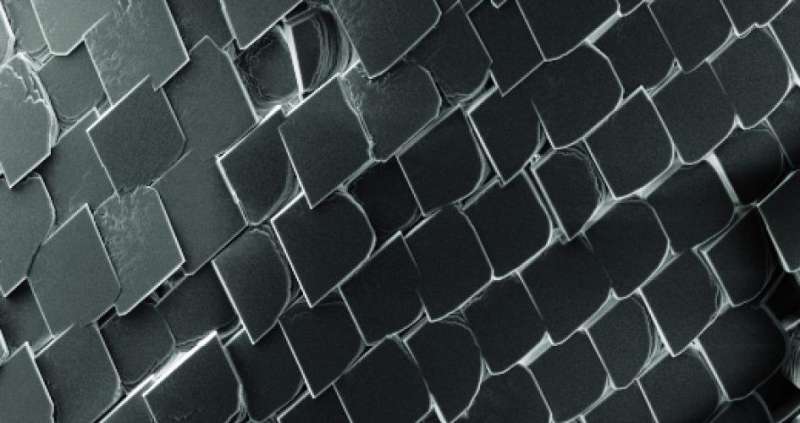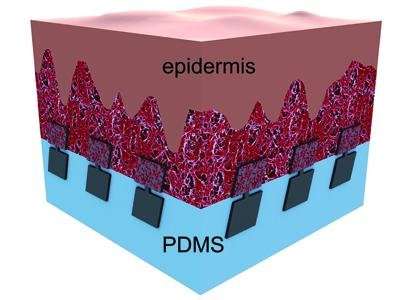Tiny scales could serve as safe material in implants to reinforce bones and joints

Scales are the material of choice for animals from pangolins to fish: They're customizable, water-friendly, strong but flexible, and easy to fix when damaged.
Scientists would like to recreate this unique structure—they can imagine uses from medical implants to flexible electronics—but it's proved difficult using non-organic materials. But researchers with the University of Chicago have published a concept to use a naturally occurring mineral called calcite to "grow" scales that can attach to soft materials. The setup could one day serve as waterproof implants to reinforce bones or joints.
Currently surgeons use structures made out of synthetic polymers, but while they're easy to sculpt, they can degrade over time. For a replacement, the UChicago team instead started with two materials that are compatible with the body.
Silicone is a flexible, rubbery material often used in surgical implants because it doesn't react with human tissue. Calcite is a common hard mineral that many clams and oysters use in their shells (brittlestars, related to starfish, use calcite in their eyes, as did ancient trilobites). Luckily, one of the specialties of Asst. Prof. Bozhi Tian's chemistry lab is combining hard and soft materials at the molecular level.

In a paper published last fall in Nature Communications, Tian and collaborators designed a system of minuscule two-ended hooks, made out of calcite, that can "grow" from silicone into tissue to fix themselves into place.
"Silicone alone won't immobilize tissue components, and calcite alone is too stiff, but the combination of the two works very well," Tian said. "The result is a structure that is both strong and flexible."
The tiny structures, each about the size of a red blood cell, are shaped like dumbbells. One end hooks into the silicone; the other protrudes above the surface. The team tried laying a strip of lab-grown tissue on top. The dumbbells picked up calcium from the cells and grew into the tissue, affixing themselves in place.
One nice feature is that the implant could be crafted with "hooks" only in very specific places. "This method is particularly useful for biological adhesion, where you want to apply your glue very sparingly to avoid interfering in the body more than necessary," said Jaeseok Yi, a postdoctoral scholar and the first author of this paper.
More information: Jaeseok Yi et al. 3-D calcite heterostructures for dynamic and deformable mineralized matrices, Nature Communications (2017). DOI: 10.1038/s41467-017-00560-1
Journal information: Nature Communications
Provided by University of Chicago





















